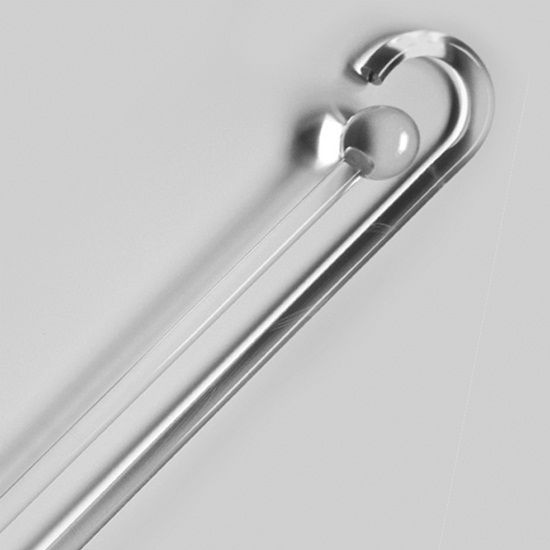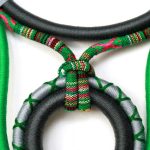Croatian artist won an award in Italy for her practical fashion accessory and a help for the elderly.
Diana Sokolić, a painter and versatile artist, has once again won an award at the international design competition held in northern Italy, and this is not really surprising anymore. Her work with light objects in recent years represents a kind of continuation of her painting career, as design is like an extension of her previous achievements, reports Novi List on June 20, 2016.
She started with necklaces and handbags created of Plexiglas, and then added to her collection another practical fashion accessory: a Plexiglas cane that did not go unnoticed with the expert jury.
Sokolić said that she has been creating light objects made of Plexiglas and LED lights for years. “I began using Plexiglas for accessories, jewellery, bags, and other products. In 2013, I participated in the competition A’Design Award in Como, Italy, for the first time, and immediately won a silver award for the FRED cufflinks, and then more awards for bags and necklaces made of Plexiglas. Last year, I won the bronze award for bracelets made of Plexiglas and lace, while this year I sent the Plexiglas canes for the category involving tools for the elderly. The gold and silver award in that category have not been presented, and I won the bronze”, she said talking about her successes at A’Design Award.

Sokolić also pointed out that youth pertains to both mind and body, “but unfortunately the body lags behind the spirit. That is why I created canes that are both beautiful and functional, and thus people will not be embarrassed to use them”. The sticks are made of transparent, engraved Plexiglas, while the base of the cane consists of the battery, LED light and the switch. When the rod touches the ground, it lights up, so the person who uses it becomes visible in the dark.

The female cane has a ball on the top, while the one meant for men is bent at the top and it resembles an umbrella handle. “The cane is a tool and there is a reason it has a certain shape, so there is not much space for experiments because the aesthetics should not endanger its functionality”, Sokolić explained.
She named the male cane Maurice after Maurice Chevalier, and the female one Marlene after Marlene Dietrich, as “they were one of the last people who used canes with such style and elegance”.









